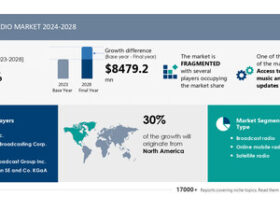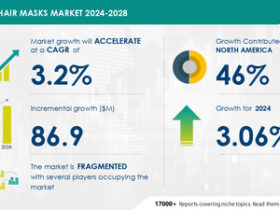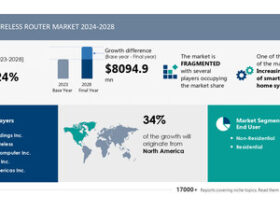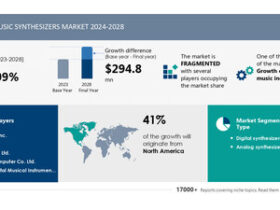THOUSAND OAKS, Calif. , Sept. 24, 2024 /PRNewswire/ — Amgen (NASDAQ:AMGN) today announced TEPEZZA® (JAN: Teprotumumab (Genetical Recombination)) has been approved for the treatment of active or high clinical activity score (CAS) Thyroid Eye Disease (TED) by Japan’s Ministry of Health, Labour and Welfare (MHLW).
TED is a serious, progressive and potentially vision-threatening rare autoimmune disease that can cause proptosis (eye bulging), diplopia (double vision), eye pain, redness and swelling.1 There are approximately 25,000 – 35,000 people living with TED in Japan , inclusive of both active and chronic (low CAS) TED.2 TEPEZZA is now the first and only medicine approved in Japan to treat active TED. A separate trial to study the efficacy of TEPEZZA in chronic TED patients in Japan is currently ongoing.
“This is the first approval for TEPEZZA in Asia and marks a significant milestone for the global treatment of TED,” said Jay Bradner, M.D., executive vice president, Research and Development, and chief scientific officer at Amgen. “Historically, patients with TED have been managed with complex surgeries and high-dose steroids, which can cause further complications. With TEPEZZA, doctors have a nonsurgical and nonsteroidal option that treats a root cause of this debilitating disease.”
TEPEZZA received orphan drug designation in Japan , which provided a nine-month regulatory review period compared to the standard 12-month review. The approval was based on the positive results of OPTIC-J (jRCT2031210453 ), a Phase 3 randomized, double-masked, placebo-controlled, parallel-group, multicenter study evaluating the efficacy, tolerability and safety of TEPEZZA in the treatment of patients with active TED in Japan .
The primary endpoint in the trial was met, as 89% of patients treated with TEPEZZA had a clinically meaningful improvement in proptosis (≥2 mm) compared with placebo (11%; p<0.0001) at week 24. The safety profile was consistent with the complete body of clinical data supporting TEPEZZA.3 A second Phase 3 clinical trial is ongoing in Japan evaluating TEPEZZA among adults with chronic TED and a low CAS (jRCT2031220730 ). "People living with active TED can experience a significant burden of disease with symptoms that can make daily life difficult to navigate," said Yuji Hiromatsu , M.D., a professor emeritus at the Kurume University Medical Center and physician at the Diabetes, Thyroid and Endocrine Center at the Shin-Koga Hospital. "The approval of TEPEZZA in Japan is an important advancement for patients and offers a new treatment option that targets the underlying mechanism of the disease." In addition to Japan , TEPEZZA is currently approved in the United States, Brazil and the Kingdom of Saudi Arabia, and is under regulatory review in Europe , Canada and Australia . About Thyroid Eye Disease (TED) TED is a serious, progressive, debilitating and potentially vision-threatening rare autoimmune disease.4 It often occurs in people living with Graves' disease, but is a distinct disease that is caused by autoantibodies activating an insulin-like growth factor-1 receptor (IGF-1R)-mediated signaling complex on cells within the retro-orbital space.5 , 6 This leads to a cascade of negative effects, which may cause long-term, irreversible damage, including blindness.7 , 8 Signs and symptoms of TED may include dry eyes and grittiness; redness, swelling and excessive tearing; eyelid retraction; proptosis; pressure and/or pain behind the eyes; and diplopia. Important Japan Product information PRODUCT NAME TEPEZZA® for Intravenous Infusion 500 mg Generic Name (JAN) Teprotumumab (Genetical Recombination) Indication Active thyroid eye disease Precautions related to indications Hearing disorders (e.g., deafness, hypoacusis, Eustachian tube dysfunction, patulous Eustachian tube, hyperacusis, tinnitus, and tympanic membrane disorder) may occur during treatment with TEPEZZA, and serious and irreversible events have also been reported. Patients eligible for TEPEZZA therapy should be selected based on a thorough understanding of the information provided in "17. Clinical Results," the backgrounds of the patients in the clinical studies, and the results of the studies of the efficacy and safety of TEPEZZA. Clinical studies of the efficacy and safety in patients with mild active thyroid eye disease have not been conducted. Dose and Administration The usual adult dosage is 10 mg/kg as teprotumumab (genetical recombination) for the first dose and 20 mg/kg for the second and subsequent doses, administered intravenously every 3 weeks, for a total of 8 infusions. About TEPEZZA ® (teprotumumab-trbw) in the U.S. U.S. INDICATION TEPEZZA® is indicated for the treatment of Thyroid Eye Disease regardless of Thyroid Eye Disease activity or duration. U.S. IMPORTANT SAFETY INFORMATION WARNINGS AND PRECAUTIONS Infusion Reactions: TEPEZZA may cause infusion reactions. Infusion reactions have been reported in approximately 4% of patients treated with TEPEZZA. Reported infusion reactions have usually been mild or moderate in severity. Signs and symptoms may include transient increases in blood pressure, feeling hot, tachycardia, dyspnea, headache, and muscular pain. Infusion reactions may occur during an infusion or within 1.5 hours after an infusion. In patients who experience an infusion reaction, consideration should be given to premedicating with an antihistamine, antipyretic, or corticosteroid and/or administering all subsequent infusions at a slower infusion rate. Preexisting Inflammatory Bowel Disease: TEPEZZA may cause an exacerbation of preexisting inflammatory bowel disease (IBD). Monitor patients with IBD for flare of disease. If IBD exacerbation is suspected, consider discontinuation of TEPEZZA. Hyperglycemia: Increased blood glucose or hyperglycemia may occur in patients treated with TEPEZZA. In clinical trials, 10% of patients (two-thirds of whom had preexisting diabetes or impaired glucose tolerance) experienced hyperglycemia. Hyperglycemic events should be controlled with medications for glycemic control, if necessary. Assess patients for elevated blood glucose and symptoms of hyperglycemia prior to infusion and continue to monitor while on treatment with TEPEZZA. Ensure patients with hyperglycemia or preexisting diabetes are under appropriate glycemic control before and while receiving TEPEZZA. Hearing Impairment Including Hearing Loss: TEPEZZA may cause severe hearing impairment including hearing loss, which in some cases may be permanent. Assess patients' hearing before, during, and after treatment with TEPEZZA and consider the benefit-risk of treatment with patients. ADVERSE REACTIONS The most common adverse reactions (incidence ≥5% and greater than placebo) are muscle spasm, nausea, alopecia, diarrhea, fatigue, hyperglycemia, hearing impairment, dysgeusia, headache, dry skin, weight decreased, nail disorders, and menstrual disorders. Please click here for Full TEPEZZA U.S. Prescribing Information. About Amgen Amgen discovers, develops, manufactures and delivers innovative medicines to help millions of patients in their fight against some of the world's toughest diseases. More than 40 years ago, Amgen helped to establish the biotechnology industry and remains on the cutting-edge of innovation, using technology and human genetic data to push beyond what's known today. Amgen is advancing a broad and deep pipeline that builds on its existing portfolio of medicines to treat cancer, heart disease, osteoporosis, inflammatory diseases and rare diseases. In 2024, Amgen was named one of the "World's Most Innovative Companies" by Fast Company and one of "America's Best Large Employers" by Forbes, among other external recognitions . Amgen is one of the 30 companies that comprise the Dow Jones Industrial Average® , and it is also part of the Nasdaq-100 Index® , which includes the largest and most innovative non-financial companies listed on the Nasdaq Stock Market based on market capitalization. For more information, visit Amgen.com and follow Amgen on X , LinkedIn , Instagram , TikTok , YouTube and Threads . Amgen Forward-Looking Statements This news release contains forward-looking statements that are based on the current expectations and beliefs of Amgen. All statements, other than statements of historical fact, are statements that could be deemed forward-looking statements, including any statements on the outcome, benefits and synergies of collaborations, or potential collaborations, with any other company (including BeiGene, Ltd. or Kyowa Kirin Co., Ltd.), the performance of Otezla® (apremilast) (including anticipated Otezla sales growth and the timing of non-GAAP EPS accretion), our acquisitions of Teneobio, Inc., ChemoCentryx, Inc., or Horizon Therapeutics plc (including the prospective performance and outlook of Horizon's business, performance and opportunities, any potential strategic benefits, synergies or opportunities expected as a result of such acquisition, and any projected impacts from the Horizon acquisition on our acquisition-related expenses going forward), as well as estimates of revenues, operating margins, capital expenditures, cash, other financial metrics, expected legal, arbitration, political, regulatory or clinical results or practices, customer and prescriber patterns or practices, reimbursement activities and outcomes, effects of pandemics or other widespread health problems on our business, outcomes, progress, and other such estimates and results. Forward-looking statements involve significant risks and uncertainties, including those discussed below and more fully described in the Securities and Exchange Commission reports filed by Amgen, including our most recent annual report on Form 10-K and any subsequent periodic reports on Form 10-Q and current reports on Form 8-K. Unless otherwise noted, Amgen is providing this information as of the date of this news release and does not undertake any obligation to update any forward-looking statements contained in this document as a result of new information, future events or otherwise. No forward-looking statement can be guaranteed and actual results may differ materially from those we project. Discovery or identification of new product candidates or development of new indications for existing products cannot be guaranteed and movement from concept to product is uncertain; consequently, there can be no guarantee that any particular product candidate or development of a new indication for an existing product will be successful and become a commercial product. Further, preclinical results do not guarantee safe and effective performance of product candidates in humans. The complexity of the human body cannot be perfectly, or sometimes, even adequately modeled by computer or cell culture systems or animal models. The length of time that it takes for us to complete clinical trials and obtain regulatory approval for product marketing has in the past varied and we expect similar variability in the future. Even when clinical trials are successful, regulatory authorities may question the sufficiency for approval of the trial endpoints we have selected. We develop product candidates internally and through licensing collaborations, partnerships and joint ventures. Product candidates that are derived from relationships may be subject to disputes between the parties or may prove to be not as effective or as safe as we may have believed at the time of entering into such relationship. Also, we or others could identify safety, side effects or manufacturing problems with our products, including our devices, after they are on the market. Our results may be affected by our ability to successfully market both new and existing products domestically and internationally, clinical and regulatory developments involving current and future products, sales growth of recently launched products, competition from other products including biosimilars, difficulties or delays in manufacturing our products and global economic conditions. In addition, sales of our products are affected by pricing pressure, political and public scrutiny and reimbursement policies imposed by third-party payers, including governments, private insurance plans and managed care providers and may be affected by regulatory, clinical and guideline developments and domestic and international trends toward managed care and healthcare cost containment. Furthermore, our research, testing, pricing, marketing and other operations are subject to extensive regulation by domestic and foreign government regulatory authorities. Our business may be impacted by government investigations, litigation and product liability claims. In addition, our business may be impacted by the adoption of new tax legislation or exposure to additional tax liabilities. If we fail to meet the compliance obligations in the corporate integrity agreement between us and the U.S. government, we could become subject to significant sanctions. Further, while we routinely obtain patents for our products and technology, the protection offered by our patents and patent applications may be challenged, invalidated or circumvented by our competitors, or we may fail to prevail in present and future intellectual property litigation. We perform a substantial amount of our commercial manufacturing activities at a few key facilities, including in Puerto Rico , and also depend on third parties for a portion of our manufacturing activities, and limits on supply may constrain sales of certain of our current products and product candidate development. An outbreak of disease or similar public health threat, such as COVID-19, and the public and governmental effort to mitigate against the spread of such disease, could have a significant adverse effect on the supply of materials for our manufacturing activities, the distribution of our products, the commercialization of our product candidates, and our clinical trial operations, and any such events may have a material adverse effect on our product development, product sales, business and results of operations. We rely on collaborations with third parties for the development of some of our product candidates and for the commercialization and sales of some of our commercial products. In addition, we compete with other companies with respect to many of our marketed products as well as for the discovery and development of new products. Further, some raw materials, medical devices and component parts for our products are supplied by sole third-party suppliers. Certain of our distributors, customers and payers have substantial purchasing leverage in their dealings with us. The discovery of significant problems with a product similar to one of our products that implicate an entire class of products could have a material adverse effect on sales of the affected products and on our business and results of operations. Our efforts to collaborate with or acquire other companies, products or technology, and to integrate the operations of companies or to support the products or technology we have acquired, may not be successful. There can be no guarantee that we will be able to realize any of the strategic benefits, synergies or opportunities arising from the Horizon acquisition, and such benefits, synergies or opportunities may take longer to realize than expected. We may not be able to successfully integrate Horizon, and such integration may take longer, be more difficult or cost more than expected. A breakdown, cyberattack or information security breach of our information technology systems could compromise the confidentiality, integrity and availability of our systems and our data. Our stock price is volatile and may be affected by a number of events. Our business and operations may be negatively affected by the failure, or perceived failure, of achieving our environmental, social and governance objectives. The effects of global climate change and related natural disasters could negatively affect our business and operations. Global economic conditions may magnify certain risks that affect our business. Our business performance could affect or limit the ability of our Board of Directors to declare a dividend or our ability to pay a dividend or repurchase our common stock. We may not be able to access the capital and credit markets on terms that are favorable to us, or at all. CONTACT: Amgen, Thousand Oaks Madison Howard , 773-636-4910 (media) Elissa Snook , 609-251-1407 (media) Justin Claeys , 805-313-9775 (investors) References Smith TJ, Kahaly GJ, Ezra DG, et al. Teprotumumab for thyroid-associated ophthalmopathy. N Engl J Med. 2017;376(18):1748-1761. Natsuko W et al. J Endocr Soc. 2023 Nov 27;8(1):bvad148. Yuji Hiromatsu , et al. "Efficacy and Safety of Teprotumumab in Japanese Patients with Active Thyroid Eye Disease." The 66th Annual Meeting of the Japan Thyroid Association, December 9, 2023 . Abstract No.O13-5. Barrio-Barrio J, et al. Graves' Ophthalmopathy: VISA versus EUGOGO Classification, Assessment, and Management. Journal of Ophthalmopathy . 2015;2015:249125. Weightman DR, et al. Autoantibodies to IGF-1 Binding Sites in Thyroid Associated Ophthalmopathy. Autoimmunity . 1993;16(4):251–257. Pritchard J, et al. Immunoglobulin Activation of T Cell Chemoattractant Expression in Fibroblasts from Patients with Graves' Disease Is Mediated Through the Insulin-Like Growth Factor 1 Receptor Pathway. J Immunol . 2003;170:6348-6354. McKeag D, et al. Clinical features of dysthyroid optic neuropathy: a European Group on Graves' Orbitopathy (EUGOGO) survey. Br J Ophthalmol . 2007;91:455-458. Bartalena L, Kahaly GJ, Baldeschi L, et al. The 2021 European Group on Graves' Orbitopathy (EUGOGO) Clinical Practice Guidelines for the Medical Management of Graves' Orbitopathy. Eur J Endocrinol . 2021. View original content to download multimedia:https://www.prnewswire.com/news-releases/tepezza-teprotumumab-receives-approval-in-japan-for-the-treatment-of-active-thyroid-eye-disease-302257503.html SOURCE Amgen










Leave a Reply